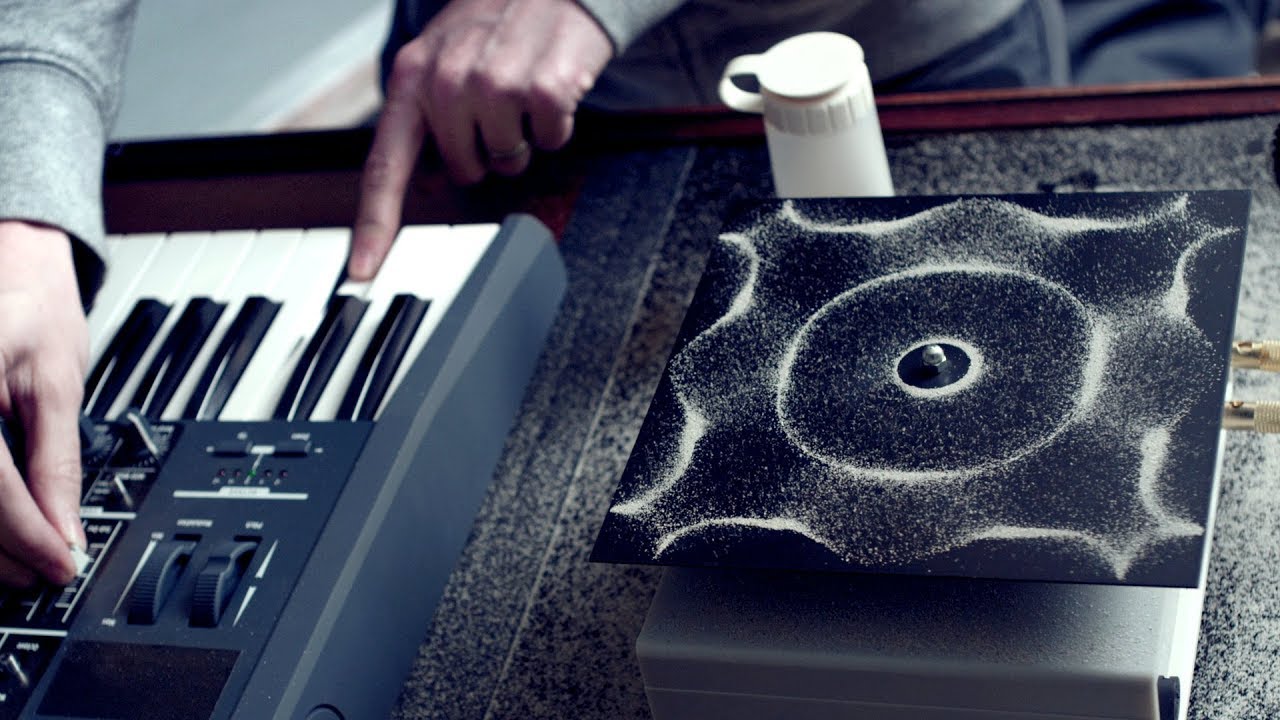Cymatics and Ancient modern Sound Technology
Cymatics is the study of visible sound and vibration. It explores how sound waves can create patterns and shapes in various mediums such as liquids, powders, and solids. This field of study has applications in various scientific disciplines, including acoustics, physics, and music.
Cymatics experiments typically involve a surface with a thin layer of material (such as sand, water, or powder) that responds to sound vibrations. When sound is played at specific frequencies, the material on the surface begins to move and form intricate patterns, which can be observed and studied.
The patterns that emerge in cymatics experiments are often highly symmetrical and visually stunning. They provide insights into the behavior of sound waves and how they interact with different mediums. Cymatics has been used in fields such as music, art, medicine, and even in the study of ancient civilizations.
In terms of ancient and modern sound technology, cymatics has been speculated to have been used in various cultures throughout history. For example, some researchers suggest that ancient cultures may have used sound vibrations for healing purposes or as part of religious ceremonies. While concrete evidence of ancient cymatics practices is limited, there are intriguing historical and archaeological findings that hint at the use of sound and vibration in ancient cultures.
In modern times, cymatics has found applications in music production, where it’s used to visualize sound and create unique visual effects for performances or music videos. It’s also used in scientific research to study the properties of materials and the behavior of sound waves.
Overall, cymatics is a fascinating field that bridges the gap between science, art, and culture. Its study of sound and vibration offers new perspectives on how we understand and interact with the world around us, both in ancient times and in the modern era.
https://www.youtube.com/watch?v=BstuMxTWgBU

The Healing Power of Cymatics
Introduction
Cymatics is the study of visible sound and vibration, a phenomenon that reveals how sound can shape and affect matter. This fascinating field shows that sound is not just an auditory experience but a powerful force capable of influencing our physical and mental well-being. This blog post explores the various aspects of cymatics, including its role in healing, protein synthesis, disease treatment, mood enhancement, brain chemistry, enzyme activity, and the connection to chakras.
The Healing Aspects of Cymatics
Cymatics involves using sound frequencies to create visual patterns in mediums such as water, sand, and other substances. These patterns, known as cymatic patterns, can be harnessed for healing purposes. Sound frequencies can influence cellular processes and promote healing in several ways:
- Cellular Regeneration: Specific sound frequencies can stimulate cell regeneration and repair. Studies have shown that certain frequencies can enhance the body’s natural healing processes by promoting cell growth and division.
- Pain Relief: Cymatic therapy can reduce pain by targeting specific frequencies that resonate with the body’s natural vibrations, thereby alleviating discomfort and promoting relaxation.
- Immune System Boost: Sound frequencies can stimulate the immune system, helping the body to fight off infections and diseases more effectively.
Generation of Proteins and Protein Synthesis
Proteins are essential molecules that play critical roles in virtually all biological processes. The process of protein synthesis can be influenced by sound frequencies:
- Enhancing Protein Synthesis: Specific frequencies can enhance the efficiency of ribosomes, the cellular structures responsible for assembling proteins. This can lead to increased production of essential proteins needed for various bodily functions.
- Repairing Damaged Proteins: Cymatics can aid in the repair of damaged proteins, ensuring that they function correctly. This is particularly important in preventing diseases related to protein misfolding and dysfunction.
Disease, Sickness, and Healing
Cymatics offers promising avenues for treating various diseases and promoting overall health:
- Reducing Inflammation: Sound frequencies can reduce inflammation, a common factor in many chronic diseases. By decreasing inflammation, cymatic therapy can alleviate symptoms and promote healing.
- Targeting Pathogens: Certain frequencies can disrupt the cellular membranes of pathogens, such as bacteria and viruses, effectively neutralizing them and preventing infections.
- Supporting Mental Health: Cymatic therapy can have profound effects on mental health by reducing stress, anxiety, and depression through the modulation of brainwave patterns.
Mood, Enzymes, and Brain Chemistry
Sound frequencies can significantly impact mood, enzyme activity, and brain chemistry:
- Mood Enhancement: Cymatic therapy can stimulate the release of neurotransmitters such as serotonin and dopamine, which are crucial for regulating mood and promoting feelings of happiness and well-being.
- Enzyme Activation: Sound frequencies can activate enzymes that play essential roles in metabolic processes, ensuring that the body functions optimally.
- Balancing Brain Chemistry: By influencing brainwave patterns, cymatics can help balance brain chemistry, improving cognitive function and emotional stability.
Chakras and Energy Healing
Chakras are energy centers within the body that correspond to different physical, emotional, and spiritual aspects. Cymatics can play a vital role in balancing and healing these energy centers:
- Root Chakra: Frequencies associated with grounding and stability can help balance the root chakra, promoting a sense of security and physical health.
- Sacral Chakra: Sound frequencies that resonate with creativity and emotional expression can balance the sacral chakra, enhancing relationships and emotional well-being.
- Solar Plexus Chakra: Frequencies that promote personal power and confidence can balance the solar plexus chakra, aiding in self-esteem and motivation.
- Heart Chakra: Healing frequencies that resonate with love and compassion can balance the heart chakra, fostering emotional healing and relationships.
- Throat Chakra: Frequencies associated with communication and self-expression can balance the throat chakra, improving clarity and expression.
- Third Eye Chakra: Frequencies that promote intuition and insight can balance the third eye chakra, enhancing spiritual awareness and perception.
- Crown Chakra: High frequencies that resonate with spiritual connection can balance the crown chakra, promoting a sense of unity and enlightenment.
Conclusion
Cymatics offers a unique and powerful approach to healing and wellness. By harnessing the power of sound frequencies, we can influence cellular processes, enhance protein synthesis, treat diseases, improve mental health, and balance our energy centers. As our understanding of cymatics continues to grow, so too does the potential for its application in promoting holistic health and well-being.
